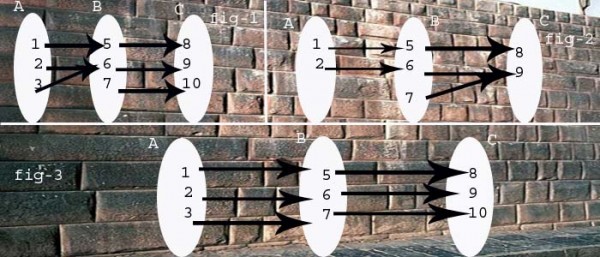consider below figures

f:A-->B g: B--->C
gof:A--->C
your 3rd QUESTION
now consider fig-1
A ={1,2,3} also called as domian..for f:A-->B
B= {5,6,7} also co-domain
range/image of A={5,6}
in which f is not injection and g is injection let's check
gof is injection or not...g(f(1))-->g(5)-->8
g(f(2))-->g(6)-->9
g(f(3))-->g(6)-->9
gof:(1,8)(2,9)(3,9) is not injection..coz 2,3 both maps to 9... so by contradiction.. if gof is injection..then f is also injection..
now your FIRST QUESTION consider fig-3
in which f is injection and g is injection let's check
A ={1,2,3} also called as domian..for f:A-->B
B= {5,6,7} also co-domain
range/image of A={5,6,7}
gof is injection or not...g(f(1))-->g(5)-->8
g(f(2))-->g(6)-->9
g(f(2))-->g(6)-->9
g(f(3))-->g(7)-->10
gof:(1,8)(2,9)(3,10) is injection...as all r one to one
now for surjection...
your 2nd question..
consider fig-3
in which f is surjection and g is surjection let's check
gof is surjection or not...g(f(1))-->g(5)-->8
g(f(2))-->g(6)-->9
g(f(3))-->g(7)-->10
gof:(1,8)(2,9)(3,10) is surjection...as no element in C is hanging.(alone)..
now your last question...
consider fig-2
in which A ={1,2} also called as domian..for f:A-->B
B= {5,6,7} also co-domain
range/image of A={5,6}
now in the above fig f is not onto ,but g is onto ..let's check gof is onto or not
.g(f(1))-->g(5)-->8
g(f(2))-->g(6)-->9
gof:(1,8)(2,9) is surjection...as no element in C is hanging.(alone)...we can say for gof to be true... g has to be true..no matters what is the value of 'f' ...it can be onto or not onto...